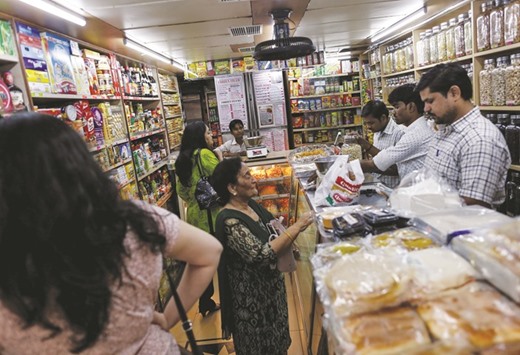India’s annual consumer price inflation accelerated to a near two-year high in May, driven by surging prices of food products such as pulses and sugar, which could dampen hopes of a rate cut at least during next monetary policy review in August.
After leaving rates unchanged last week, governor Raghuram Rajan said the Reserve Bank of India, which has targeted inflation at 5% by March 2017, was looking for room to reduce interest rates, but there were concerns over upward pressure on food and commodity prices.
Annual consumer prices, which the RBI closely tracks to set its interest rate policy, rose by 5.52% in May, according to a Reuters poll of economists, compared with an upwardly revised 5.47% in April.
Food inflation picked up to 7.55% in May from an upwardly revised 6.40% in the previous month, as prices of vegetables, sugar and pulses rose between 11% and as much as 32% from a year ago.
Retail inflation has more than halved since November 2013, thanks to a crash in global commodity prices as well as subdued rural demand.
It had hit 7.03% in August 2014.
Analysts fear an increase in the cost of petrol and diesel by more than 5% since May 1, and food items such as sugar and milk in the last month, could further heat up prices.
“While there are some seasonal factors at play, structural mismatches are also evident in the rise in protein inflation,” said A Prasanna, economist at ICICI Securities Primary Dealership.
“We stick to our call of no more rate cuts in this financial year.”
The government has also hiked taxes by 0.5 percentage point on services like telecoms, travel and eating out from June 1.
Yesterday’s data comes on the heels of a 0.8% contraction in industrial production in April.
Asia’s third largest economy grew 7.9% in the quarter to March, outpacing China’s 6.7% growth, and is projected to expand by around 7.75% in the current fiscal year that started on April 1.
New Delhi expects good rainfall between June and September, after two years of drought, to boost growth and tame prices of food items that account for nearly half of Consumer Price Index.
The monsoon, which delivers 70% of annual rainfall, is critical for India’s 263mn farmers and their crops, such as rice, cane, corn and cotton because nearly half of farmland lacks irrigation.

People shop inside a grocery store at a residential area in Mumbai. Food inflation in India picked up to 7.55% in May from an upwardly revised 6.40% in the previous month, as prices of vegetables, sugar and pulses rose between 11% and as much as 32% from a year ago.
